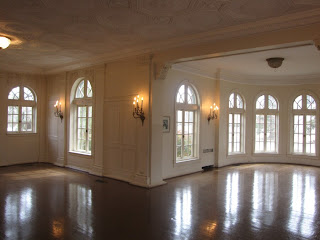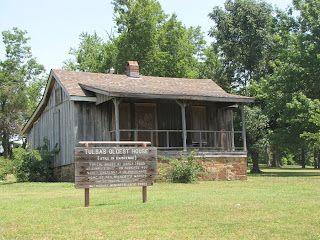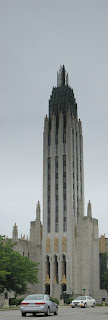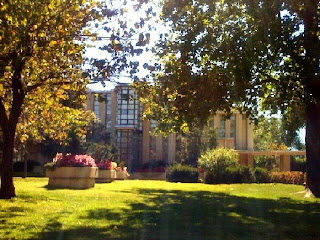
2435 South Peoria Ave.
The Italian style villa was designed by Tulsa architect, Noble B. Flemming in 1920. It has twenty-one rooms and ten bathrooms. It was built by David R. Travis (originally known as David Rabinowitz) an immigrant originally from Czarist Russia. The ballroom in the lower level was the location of the first Jewish services during the Travis residence since there was no synagogue or temple in Tulsa.
Samuel Travis built the house immediately south, which is now owned by the Tulsa Historical Society. In 1923 J. Harthur Hull purchased the home and built the Lord Burnham greenhouse and sunken garden. During the Depression the house and 10 acres was offered for sale for $25,000 with no buyer coming forward for several years.
The Snedden family finally purchased the mansion and property in 1934 and lived there until 1950, when oil man W.G. Skelly purchased the home. Mr. Skelly sold it in 1954 for $85,000 including ten acres to the City of Tulsa. Since then, the Tulsa Garden Center has operated the city-owned facility providing educational resources and meeting places for horticultural and environmental organizations.
Woodward Park with its beautiful Azalea Gardens, the multilevel Municipal Rose Garden, and the Tulsa Garden Center are all located on this 10 acre plot. This is a municipal treasure.

I love the round room with windows on the south side.

Parking in in the rear which has become the main entrance.

The greenhouse and sunken garden give the back garden a victorian look. Sometimes orchids are displayed inside.

Lamp tables built into the north wall of the library. Click to enlarge detail. This is all hand work.

A small library on the east next to the great hall. Notice the old gas stove in the fireplace. it has been "modernized".

The great hall on the south end. These are the curved windows seen yesterday from the outside.

The dining room on the north end.

The grand staircase rises to the second floor from the east side of the entry hall.

The entry hall looking south to the great hall. The front doors are on the right. It is possible to rent the entry and hall for receptions and weddings. The Garden Center in the spring and summer is a beautiful place for a wedding.

The entry hall looking north to the dining room. The front doors are on the left.








































